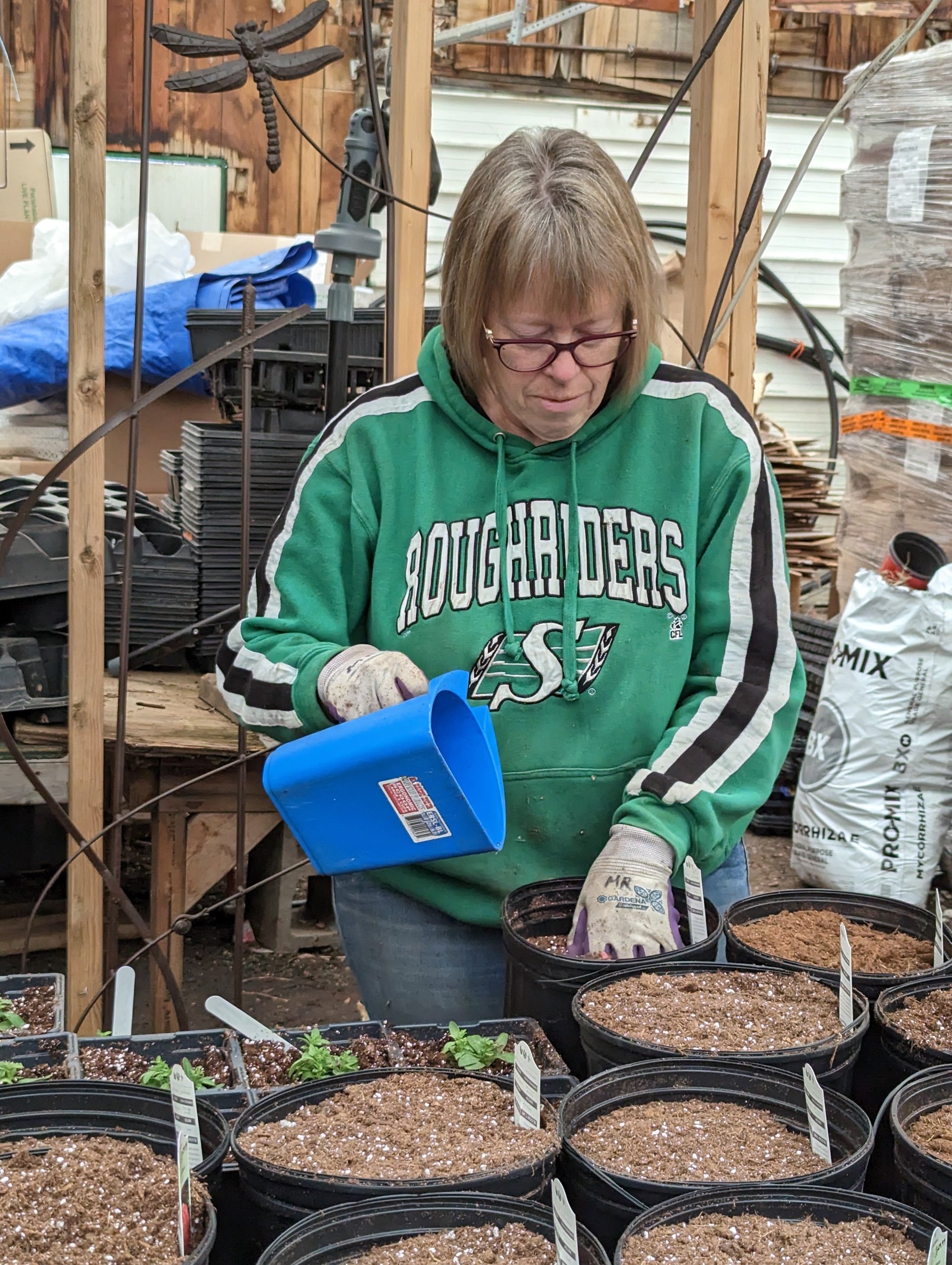Why Fall is the Perfect Time to Plant Bare Root Perennials and Bulbs
Fall is the perfect time to plant bare root perennials and bulbs. Both of these types of plants will benefit from fall planting because of the cool temperatures and the plant’s natural dormancy period, which promotes root establishment. We’ll discuss the why and how to plant bare root perennials and bulbs this fall for a garden that should flourish come spring.
Maureen, planting bare root peonies at the greenhouse.
Bare Root Perennials
Bare root plants are exactly what they sound like—plants sold without soil around their roots. You’ll often find bare root perennials available in fall or early spring, as these seasons align with the plant's dormancy. Fall planting, however, has particular benefits.
Why Fall is Ideal for Bare Root Perennials
1. Dormancy Supports Root Development
When perennials go dormant in the fall, they stop producing new top growth, allowing them to focus on root development. Planting bare root perennials during this period leverages this natural process. The plant doesn’t need to support leaves or flowers and can focus on creating a strong root system, which is essential for healthy growth in the spring.
2. Cool Temperatures Encourage Root Growth
Like with divided perennials, fall’s cooler temperatures provide the perfect environment for root development. The roots continue to grow in the warm soil until the ground freezes, giving the plant a head start.
3. Affordable and Easy to Plant
Bare root perennials are often more affordable than potted plants, making them a budget-friendly option for filling your garden. They’re also lightweight and easy to plant, especially in fall when the soil is workable.
How to Plant Bare Root Perennials
1. Soak the Roots: Before planting, soak the roots in water for a few hours to rehydrate them.
2. Dig a Hole: Dig a hole wide enough to spread out the roots comfortably.
3. Position the Plant: Place the bare root plant in the hole, ensuring the crown (where roots meet the stem) is level with the soil surface.
4. Fill and Water: Fill the hole with soil, gently pressing it down to eliminate air pockets, and water thoroughly.
Peonies are a great perennial option for fall planting.
Fall-Planted Bulbs
Bulbs such as tulips, daffodils, and hyacinths are also ideal for fall planting. Planting bulbs in the fall allows them to establish themselves over the winter and prepare for early spring blooms, often the first signs of color in the garden.
Why Fall is Ideal for Planting Bulbs
1. Cold Dormancy Triggers Spring Blooming
Many spring-blooming bulbs require a period of cold dormancy to trigger flowering. By planting bulbs in the fall, you’re giving them the cold exposure they need to bloom beautifully in the spring.
2. Root Growth Before Winter
Like bare root perennials, bulbs benefit from root development before winter sets in. The cool soil allows roots to grow and establish a strong foundation.
3. Easy to Plant and Low Maintenance
Bulbs are some of the easiest plants to grow. Once planted, they require very little attention. Fall-planted bulbs can provide years of color with minimal maintenance, making them an excellent investment for any garden.
How to Plant Bulbs
1. Choose the Right Depth: Each bulb type has specific planting depths, usually two to three times the height of the bulb. Check the packaging for guidelines.
2. Plant Pointy Side Up: Place the bulb in the hole with the pointed end facing up.
3. Cover and Water: Fill the hole with soil, gently tamp it down, and water thoroughly to settle the soil.
Planting bare root perennials and bulbs in the fall allows for natural root development and sets your garden up for success. By spring, your perennials will be ready to grow, and your bulbs will burst into bloom, bringing vibrant color to your garden. Fall planting is an affordable, low-maintenance way to enjoy a garden that will thrive year after year.
🌿 Ashton


